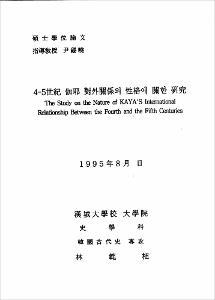4-5世紀 伽耶 對外關係의 性格에 關한 硏究
- Files in This Item:
-
-
Download
 000000066274.pdf
기타 데이터 / 6.57 MB / Adobe PDF
000000066274.pdf
기타 데이터 / 6.57 MB / Adobe PDF
-
Items in Repository are protected by copyright, with all rights reserved, unless otherwise indicated.
 000000066274.pdf
기타 데이터 / 6.57 MB / Adobe PDF
000000066274.pdf
기타 데이터 / 6.57 MB / Adobe PDFItems in Repository are protected by copyright, with all rights reserved, unless otherwise indicated.